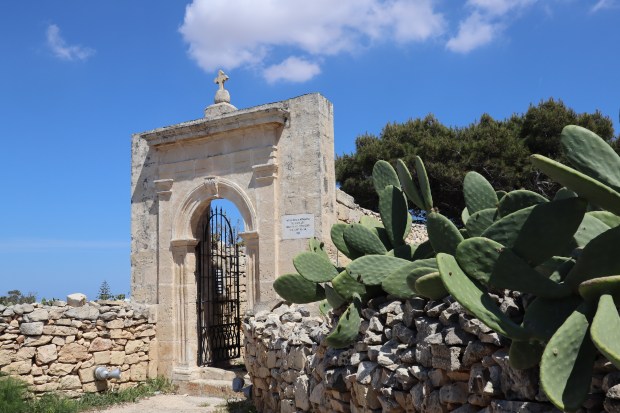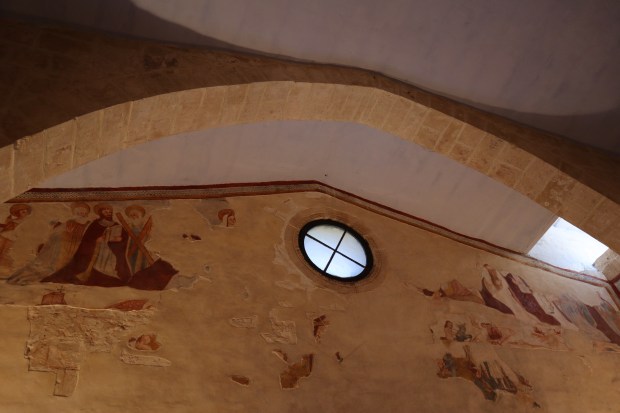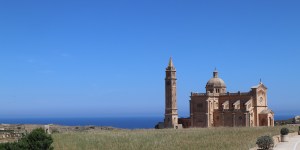Lenten Campaign 2025
This content is free of charge, as are all our articles.
Support us with a donation that is tax-deductible and enable us to continue to reach millions of readers.
The Camino de Santiago (also known in English as the Way of St. James) is one of the most (if not the most) renowned pilgrimage routes in Christianity. It holds a significant place in the history and culture of Spain, as it brings Continental and Mediterranean Europe together, while tending bridges that go way beyond the continent itself, all the way to the Holy Land. Spanning more than 800 kilometers (about 500 miles), this ancient trail leads pilgrims to the city of Santiago de Compostela in Galicia, where tradition claims the remains of St. James the Apostle were buried as early as in the 1st century AD.
The allure of the Camino lies not only in its obvious spiritual significance, but also in the diverse landscapes it covers, the architectural marvels that pilgrims discover as they walk, and the camaraderie it fosters among travelers.
Courts of the Lord
The theology behind pilgrimage stems from biblical narratives on exile, exodus, and seeking God and His presence. In the Psalms, for example, pilgrimage is depicted as a longing for communion with God, and a desire to find His dwelling place. Psalm 84 captures this sentiment, declaring, “How lovely is your dwelling place, Lord Almighty! My soul yearns, even faints, for the courts of the Lord” (Psalm 84: 1-2). The act of pilgrimage is an expression of this thirst, a deliberate journey toward encountering God and experiencing His presence.
In the New Testament, this itinerary takes on new dimensions with the life and teachings of Jesus Christ. The theology of pilgrimage here brings physical movement and the inner journey of faith together in a single word: discipleship. It implies taking up one’s cross and surrendering to Jesus’ transformative work as one walks through life. As Jesus states in the gospel of Luke (Cf. Lk 9: 23), “Whoever wants to be my disciple must deny themselves and take up their cross daily and follow me.” Pilgrimage thus becomes a metaphor for the Christian life, a call to walk in faith, continually seeking a deeper relationship with God.
In fact, Jesus Himself embarked on several significant journeys, including his pilgrimage to Jerusalem for the Passover and his subsequent crucifixion and resurrection. The disciples, following Jesus’ example, embarked on missionary trips, spreading the message of the Gospel and establishing Christian communities.
Tradition claims that one of these early disciples, James, went all the way to Spain to preach the Gospel. There, on the second day of January of the year 40, the Virgin Mary appeared to him by the river Ebro at Caesaraugusta – today’s Zaragoza. After the event, James returned to Judea, where he was beheaded by King Herod Agrippa I in the year 44. During his mission years in Spain, he made seven main disciples (the noted Seven Apostolic Men), who were then ordained in Rome by Sts. Peter and Paul and sent back to Spain to continue James’ mission.

These facts and traditions were later compiled, in the 12th century, in the famed Historia Compostelana, an anonymous chronicle written during the tenure of Diego Gemírez, the first archbishop of Compostela. The chronicle includes a thorough summary of the story of St. James as it was believed and told in Compostela at that time. It clearly states James preached the gospel not only in the Holy Land but also (and mainly) in Spain and that, after his martyrdom, his disciples carried his body by sea back to Iberia (Spain). They landed on the northern coast of Galicia, and took the body inland, finally burying him in Compostela.
The origins of the Camino de Santiago can be traced back to the early 9th century, when the tomb of St. James was discovered. The news of this discovery spread rapidly, attracting countless pilgrims from across Europe. Over time, a network of pilgrimage routes developed, crisscrossing the entire continent – and the Mediterranean sea, through Malta.
A fascinating new twist to the Camino ...
Malta has recently officially become part of the Camino de Santiago, adding a fascinating twist to the traditional pilgrimage route. In January 2023, the Ministry for Foreign and European Affairs and Trade via its Embassy of Malta in Spain, together with Heritage Malta and XirCammini (Malta’s official association representing the International Federation of the Associations of Friends of the Camino de Santiago) with the support of the Malta Tourism Authority, following long collaborative effort, launched the Camino Maltés de Santiago de Compostela, connecting Malta to the Galician capital city.
For the first time, the more than 1,000-year-old pilgrimage now includes the Camino Maltés de Santiago de Compostela route (in short, Camino Maltés), covering 3,600 km (about 2,250 miles) of land and sea transits.

... that’s not new at all
But in fact, this is not a new thing at all. Malta’s connection to the Camino de Santiago stems from its historical ties with the Knights Hospitallers, also known as the Knights of St. John of Malta.
The Knights played a pivotal role in the defense of the Holy Land during the Crusades and, after the fall of the Crusader states, they were forced to leave the Holy Land and sought refuge in various European countries, including Malta.
Upon arriving in Malta in 1530, the Knights Hospitallers established their headquarters on the island and transformed it into a formidable fortress. Over the centuries, they left an indelible mark on Malta’s architecture, culture, and piety. Leaning on an already existing culture of exceptional hospitality (as testified in the Book of Acts 28:1-10) and on their own tradition (Knights have been associated with refuges for pilgrims since 1113), they also were to provide refuge to pilgrims on their way to Santiago de Compostela.
In fact, in a Liber Bullarum entry of the early 17th century, Grandmaster Alof De Wignacourt provides instructions of safe passage (a Credencial) to Don Juan Benegas from St. Paul’s Grotto (in Rabat, in Malta) to visit holy places in Europe – including St. James in Galicia.
Maltese devotion to Saint James
Devotion to St. James grew especially during the time of the Knights of St. John. However, devotion to the Apostle predates the arrival of the Knights of St. John in Malta, as the archipelago was under Aragonese and later Spanish rule before the knights established themselves there – St. James being the undisputable patron saint of Spain.
Some examples of earlier dedication to St. James include a fresco in Hal Millieri Chapel, and various chapels dedicated to him throughout the island. In the Terre di Santa Caterina (present day Zejtun), a church dedicated to St. James existed and was later incorporated in the old church of St. Catherine (now St. Gregory). The church of Sancti Jacobi Apostoli (Guedrum) was one of the first churches in Gozo, and is also mentioned in the report of the apostolic visit of Monsignor Dusina in 1575. The vice-parish of Zabbar, before being elevated to a parish in the very early 17th century, was also dedicated to St. James.
The Balearic Islands, Sardinia, Sicily and Malta all formed part of the Aragonese, and later, after the fusion of the Kingdoms of Castile and Aragon, Spanish realm. According to the writings of St. Antioco, St. James would have passed through the port of Sulcis (now Sant’ Antioco) in Sardinia before reaching Spain. For this reason, the Camino Maltés in Sardinia follows the Camminu Santu Jacu from the Cathedral of Sant’ Antioco, through Cagliari, all the way to Porto Torres in the North of Sardinia, where the Camino proceeds by sea to Barcelona.

The Camino Maltés traverses the unique landscapes of Malta, passing through charming villages, ancient churches and chapels, and medieval towns. Indeed, Malta offers a profound spiritual journey unlike any other. From its ancient catacombs and medieval chapels to the enduring traditions of St. Paul’s Shipwreck, from its magnificent Baroque cathedrals to ancient Byzantine cave churches that bear witness to its 2,000-year uninterrupted Christian heritage, the landscape (and the soundscape, composed of constant birdsong and sea breeze) of the archipelago surely lends itself to contemplation.
The pilgrimage route eventually leads to the epic Castel Sant’Angelo, where pilgrims can continue their journey by sea towards mainland Europe, joining the Camino de Santiago in Spain.
The inclusion of Malta in the Camino de Santiago not only offers pilgrims a unique and extended spiritual experience but also promotes cultural exchange and tourism in the region. It allows visitors to discover the hidden gems of Malta, its skyline adorned with a plethora of churches, chapels, and shrines – each a testament to the archipelago’s deep-rooted Christian heritage. From the awe-inspiring St. John’s Co-Cathedral in Valetta (probably the most impressive Baroque building in the world) to the peacefully majestic Basilica of Ta’ Pinu in Gozo, these architectural marvels invite pilgrims to enter and experience moments of profound spiritual connection.
But those who descend beneath the surface of the island find that yet another hidden treasure awaits: the ancient catacombs. Carved into the limestone by early Christian communities, these subterranean burial chambers offer pilgrims a unique space for contemplation and meditation. The dimly lit passages, adorned with intricate burial niches, evoke a sense of awe and reverence, connecting pilgrims to the faith of those who once worshipped in these hallowed halls. As they wander through these catacombs, pilgrims gain a profound appreciation for the enduring legacy of Christianity and the unwavering devotion of early believers. In fact, these catacombs-hypogea are the most important ones outside of Rome.
As pilgrims go along the Camino Maltés, they discover the depths of their own spirit, and the shared roots of their faith – a faith that the locals are deeply proud of: Malta is indeed the most Catholic country in the world (after the Vatican, that is).
By recognizing Malta as part of the Camino de Santiago, a new chapter is written in the history of these two early cradles of Christianity – Malta and Spain. It reinforces the idea that pilgrimage is not limited to a single path, but is a universal human experience that transcends borders and connects people across time and space. The Camino Maltés now offers pilgrims the chance to embark on a journey that merges ancient traditions, historical narratives, and spiritual quests, providing a truly enriching and transformative pilgrimage experience.
Interested in a pilgrimage?
XirCammini helps individuals or groups to walk the Caminos. Contact us on information@XirCammini.org or via WhatsApp on +35679046942. We are a not-for-profit organization dedicated to historical and faith-related walks in Malta and Europe – registered as a Voluntary Organization (VO1646) with the Office of the Commissioner for Voluntary Organizations, Malta.




